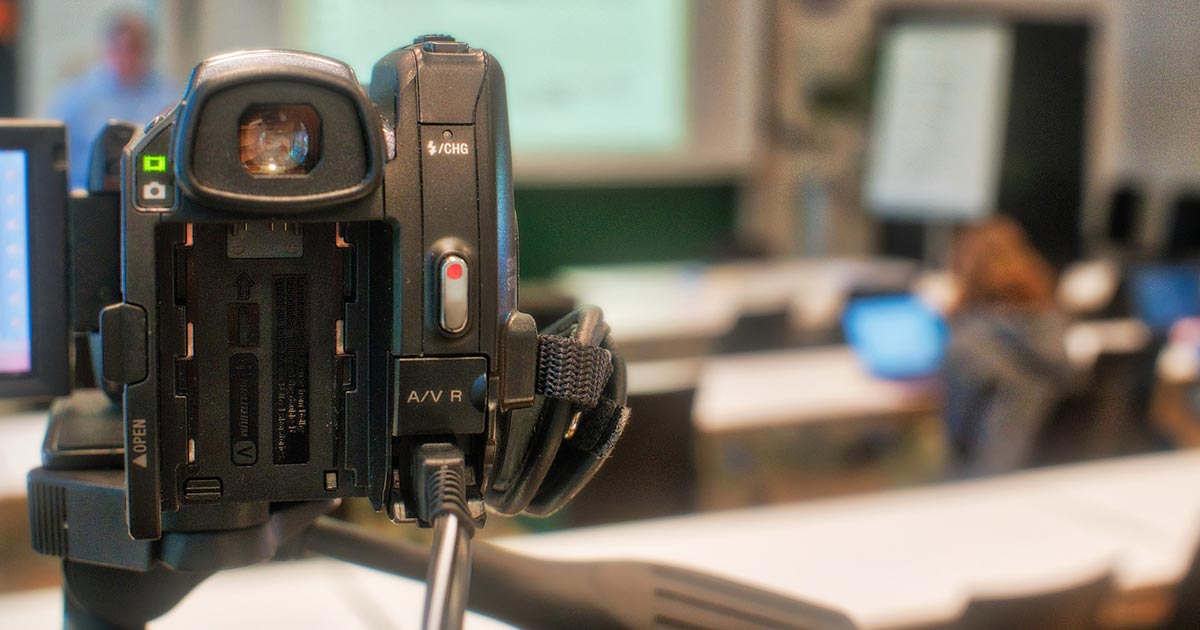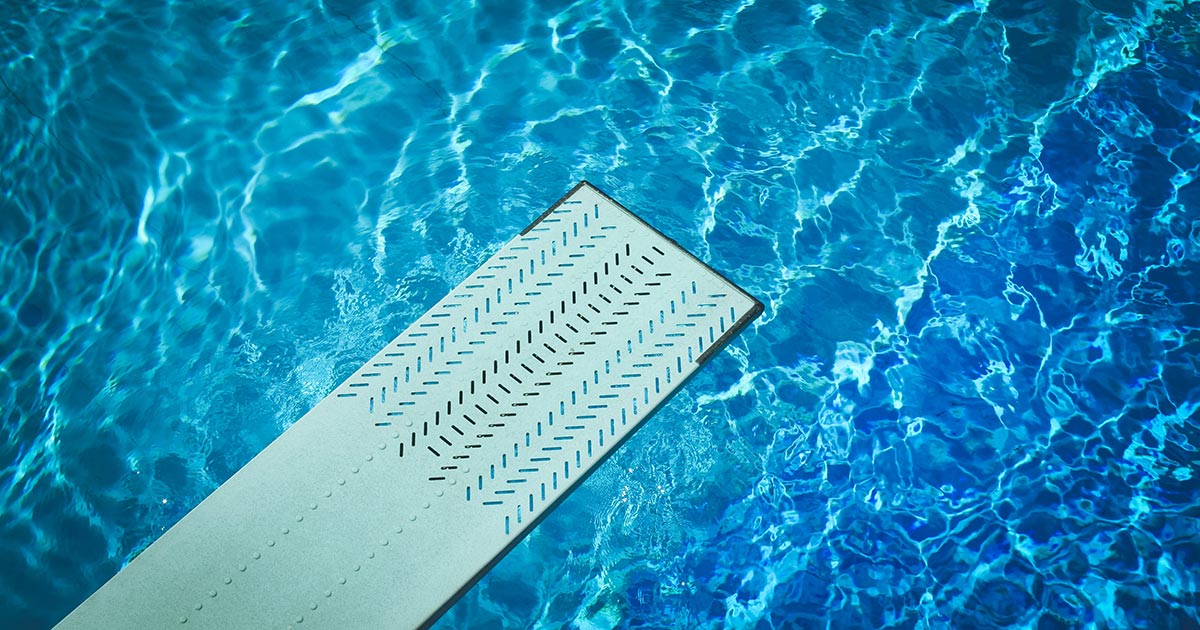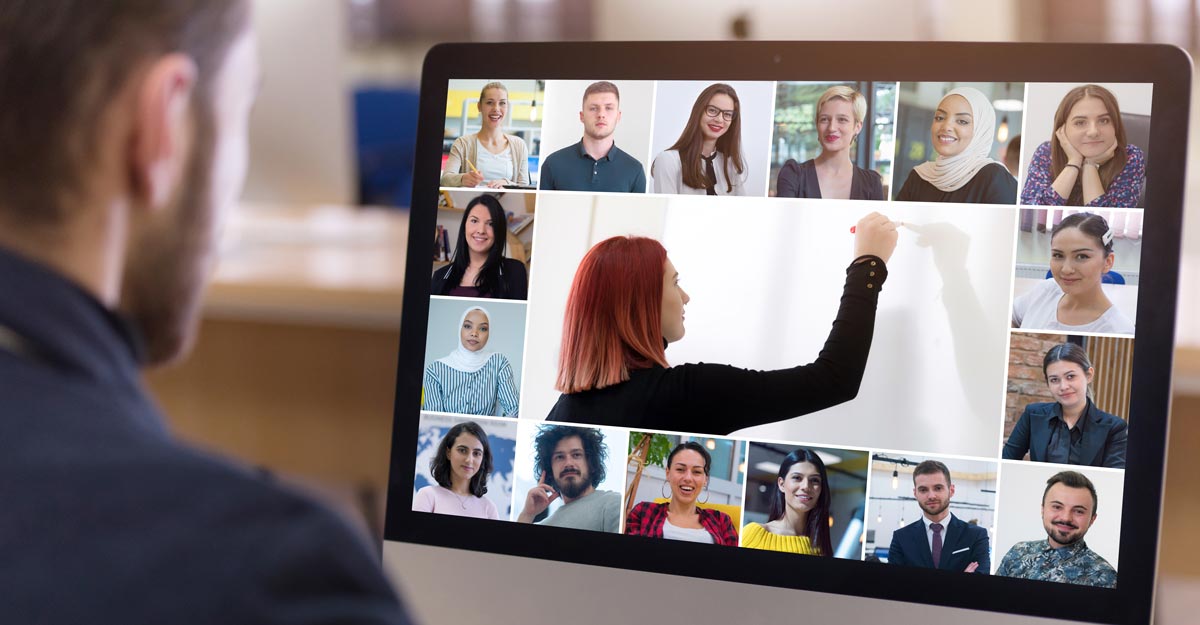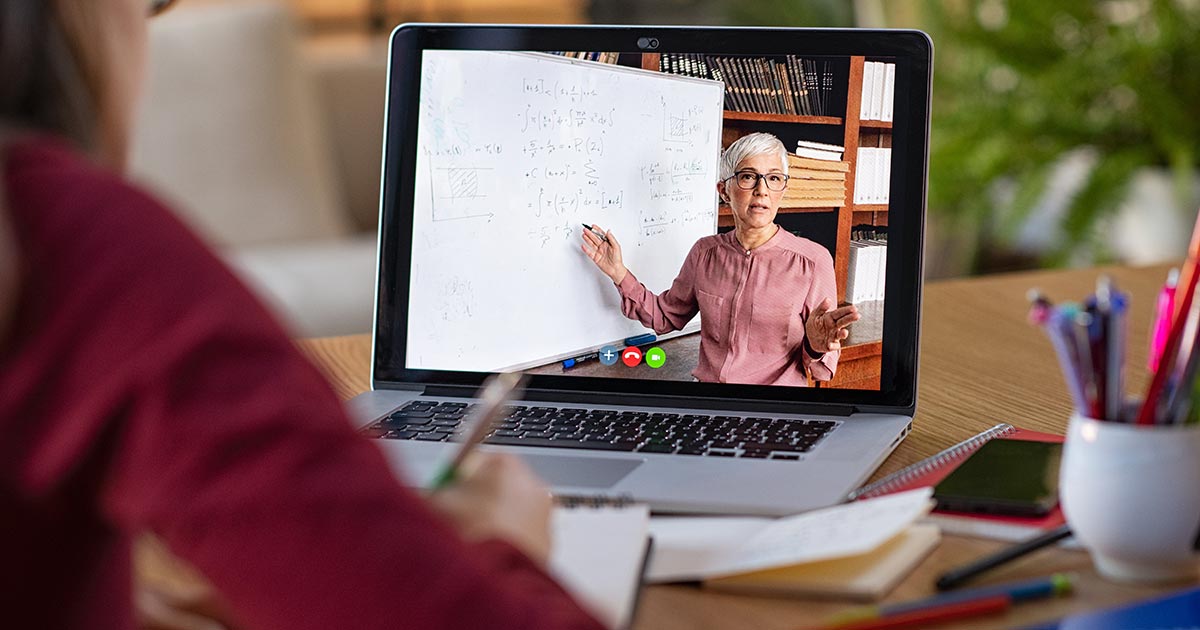As the new academic year begins, veterinary schools across the UK are welcoming student vets on their journey to their chosen careers. While we all hope this year will be less eventful than last year, there’s little doubt that many large lectures will continue to be recorded or put online to minimise the spread of COVID-19.
Learning with technology is fast becoming standard practice for vets. There are eye-catching new tools, like simulation models that mimic arrhythmic heartbeats and augmented reality videos to demonstrate catheterisation, but there are also more subtle technologies many students may not think about. Lecture recording – the practice of capturing audio and visual representations of the lecture – is now common in many universities across the world.
There is a temptation to think about lectures as they were in James Herriot’s day, with a lecturer standing in front of a chalkboard drawing complicated anatomy diagrams while students squint and try to capture as much as they can on paper. Now – with smart boards, PowerPoints and recordings – students can have a much more complete record of the material covered – and fewer hand cramps.

While some lecturers have been concerned that recordings will stop students learning how to take notes, research at the Royal (Dick) School of Veterinary Studies has found many students use recordings very effectively in their study strategies.
In this work, some of which was funded by Echo360, a video-based teaching and learning platform, we have identified five top tips for students who want to make the most of studying with lecture recordings.
Whether your lecture is on campus in a bustling lecture hall or on a screen from the comfort of your bedroom, these tips will help you to get the most of your time at vet school (and we won’t lie, they are good for online CPD, too, for those qualified vets among you).
TIP #1: Know what the lecture is for
Most lectures will have “learning outcomes” or “instructional objectives”, either clearly detailed at the start of the lecture or highlighted as part of your course material (such as the course handbook).
Learning outcomes are a great way of making sure you have understood the purpose of the lecture and met its aims1. Learning outcomes usually begin with a statement like “at the end of this lecture, you should be able to…”. Unsurprisingly, these are the skills you should be able to do after you’ve finished the lecture!
Imagine a lecture designed to teach you how to make the perfect cup of tea. The learning outcomes might be:
- Identify the sugar caddy, tea caddy and milk jug in the kitchen.
- Describe how you would assess a person’s tea preference.
After the lecture, you should be able to go into your kitchen and point to the relevant equipment, and ask your guest how they like their tea to be made.
If you haven’t been able to achieve these things after the lecture, you might want to revise the topic again, review the recording, or ask the lecturer clarifying questions (“can you describe the sugar caddy again, Doctor?”). If you’re not sure what the learning outcomes are, be sure to look in your course handbook, but also don’t be afraid to ask your course organiser or lecturer.
TIP #2: Lectures as the diving board
Although it can seem as though you’ve just had an ocean’s worth of material dumped on your head in a lecture, your lecturer will be thinking you’ve barely dipped your toe in the water.
Often, the lecture is an introduction to the subject, a diving board that helps you find the right materials to study further. We’ve seen in our studies that students can use lecture recordings in all sorts of inventive and useful ways to support their learning.

It might be tempting to put lecture recordings on while doing the dishes, like your favourite Netflix series, but studying should be a dynamic activity. In one study2 we found vet students would watch recordings, pausing often to look up references or clarify concepts from their own notes.
We’ve also seen that students like to revisit their lectures on EMS3 – particularly to reconsider tricky topics that may have come up on placement, or just as a reminder that they do know this material really.
TIP #3: Make good notes
While it’s easy to say “make sure you study actively with recordings”, it can be a bit harder to imagine what that looks like. Here are some of our recommendations for making the best of your notes.
Remember that your notes can (and maybe should) begin before the lecture. You will most likely know the topics in advance, so outline what you think you’re going to learn, and even some potential questions before you review a lecture recording or go to class.
Leave gaps in your notes where you might want to revisit important phases or concepts. This is particularly useful in recorded sessions, because you can concentrate on listening to the lecture, knowing you can revisit the recording and look up the spelling of “blepharorrhaphy” later. We all know that’s suturing eyelids, of course, but if you weren’t sure, you could test yourself when you’re filling in your notes after class by researching the answer after you’ve made a guess.
It’s important to remember that the best notes aren’t just a transcript of the lecture. The recording is there to help make sure you don’t miss the details, but you need to return to your notes and expand on them. There should be more in your lecture notes than what was said by the lecturer.
The notes you have at the start of class won’t be the same notes you have before the exam. The notes should evolve with you and your understanding of the subject. You may find it useful to reorganise your notes as you study. It might not be logical to you to have them in the order of your lectures. Most importantly, your notes are for you and don’t need to be pretty, or make sense to anyone else.

TIP #4: Mix it up
One of the great things about recordings is that they give you the freedom to experiment.
Let’s say you wanted to try a new way of taking notes, like the Cornell system4, you can pick a recorded lecture to experiment in. If you hate it, you can use the recording to fill your notes in again. Perhaps you feel you might concentrate more if you take notes on pen and paper instead of on a laptop – why not try it out?
You may also find it useful to take and store your own notes online alongside recorded lectures or, if your institution has one, use a dedicated chat thread to discuss them with your lecturer or fellow students. It can be helpful to supplement your own understanding of the topics being covered by drawing from different perspectives.
Vet school can feel very pressured, but experimenting is a really important part of learning. Taking the step from school to university can be a great time to figure out what works for you, and what you might want to change.
This tip is also especially useful for graduated vets who are working on CPD recordings – what worked for you before you graduated might not work when you’re also running a practice and dodging children underfoot.
We’ve heard that our students like to use recordings in group study sessions. Think about sharing your notes in sessions like these, be they in person or over an e-conferencing platform. Can you get any tips on organisation from others, or help each other to get a better understanding of the topic? These kinds of group discussions are so important, both for learning the topic, but also learning how to become collegiate vets.

TIP #5: Relax
My final tip is to try to relax. The last 18 months have been tough on everyone, and you might be worrying about sitting formal exams again, anxious about leaving your family dog behind or simply concerned about how you’ll balance all the clubs you’re trying to join.
Everyone needs a sick day occasionally, and one of the big things we’ve heard from our students is that having recordings and virtual learning environments can help take some of the pressure off.
Ultimately, the way you study will be very personal to you. The tools and technologies are there to help, and they are worth exploring and experimenting with. Most of all, take the time to enjoy these lectures. They are the first step on the path to becoming the vet you’re going to be.

Leave a Reply